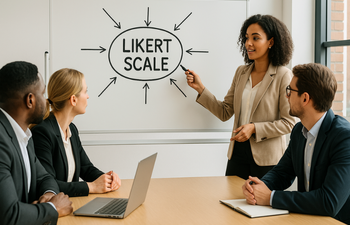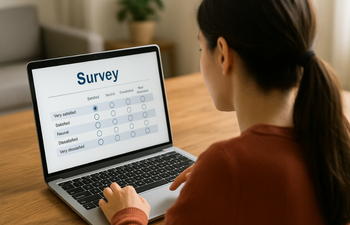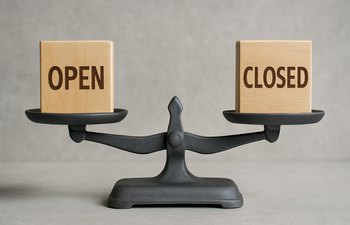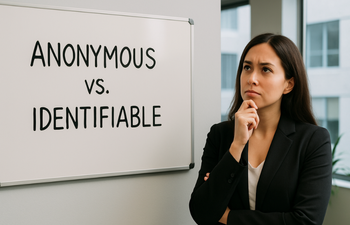What Your Survey Completion Rate Says About Your Audience
Understand what your survey completion rate reveals about your audience’s behavior, preferences, and engagement.
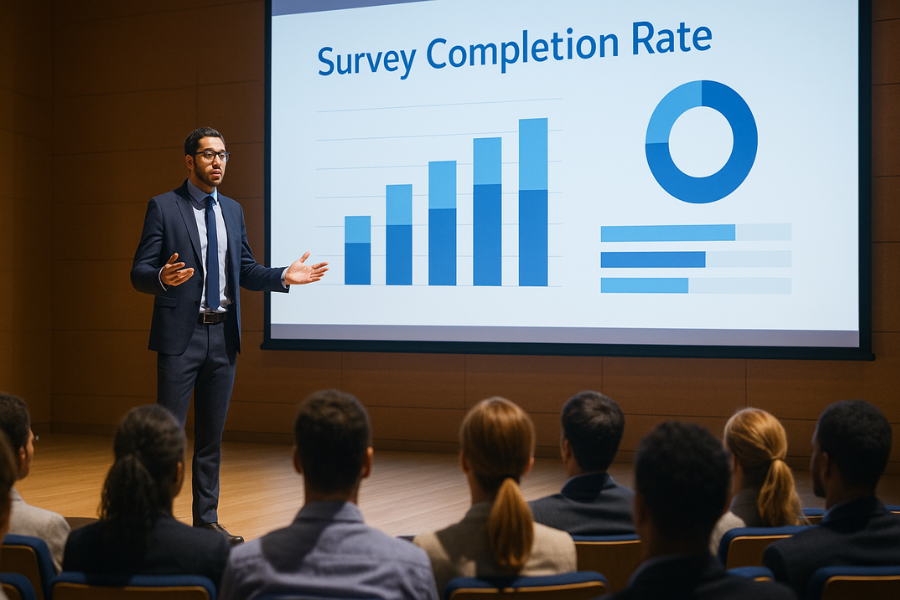
Introduction
Survey completion rate might seem like just another metric in your analytics dashboard, but it actually serves as a window into your audience’s mind. It can quietly reveal how your respondents perceive your brand, how engaged they are with your content, and how well your questions align with their interests. This metric, often overlooked, can be the key to fine-tuning your outreach, understanding behavioral patterns, and making smart decisions based on feedback.
In this article, we’ll explore what your survey completion rate really says about your audience, how to interpret its signals, and how to use that data to improve engagement and outcomes. Whether you're a market researcher, product manager, or digital marketer, understanding this metric can dramatically enhance your ability to connect with your audience.
For insights on optimizing survey timing, visit 10 Data-Backed Best Days and Times to Send Online Surveys.
What Is Survey Completion Rate?
Survey completion rate refers to the percentage of respondents who finish the survey after starting it. It’s a critical engagement metric that shows how compelling, clear, and user-friendly your survey is. A high rate indicates strong interest and alignment, while a low rate may suggest confusion, frustration, or disinterest.
Why Survey Completion Rate Matters
The completion rate doesn't just measure formality, it gives insight into the effectiveness of your survey design and the mindset of your respondents.
- Reflects audience interest and attention span.
- Indicates how trustworthy your audience finds you.
- Reveals usability and accessibility of your survey.
For businesses seeking instant feedback, explore Real-Time Survey Results: Why Instant Feedback Matters in Fast-Moving Businesses.
Interpreting High Completion Rates
A high survey completion rate, typically above 70%, is a strong sign of success. It means your questions resonate, the structure works, and the user experience is optimized. But don’t rest on your laurels, these rates can fluctuate and should be monitored regularly.
Traits of Audiences with High Completion Rates
- Highly engaged and motivated.
- Trust your brand or platform.
- Find value in giving feedback.
What Low Completion Rates Might Mean
If you see a high dropout rate mid-survey, it's a warning. Something is turning users away, be it the design, the questions, or even your brand’s tone.
Common Causes Behind Low Completion Rates
- Surveys are too long or boring.
- Questions feel irrelevant or invasive.
- Lack of mobile optimization.
- Poorly-timed delivery or follow-up.
Measuring and Calculating Completion Rates
To calculate the survey completion rate, use this simple formula:
Tracking this over time and across segments can help detect trends or problem areas.
Segmenting Completion Rate by Audience
Breaking down your completion rates by audience segment (e.g., age, device, source) allows you to understand who is most or least engaged.
- Mobile vs. desktop users
- First-time vs. returning visitors
- Demographic groups like age or region
Behavioral Patterns Hidden in Completion Data
A drop-off at question five? It might be too personal or confusing. Many completions from one channel? That’s your engaged audience.
Actionable Takeaways
- Map drop-off points to specific questions.
- Adjust length and tone based on user preferences.
- Test different audience segments for deeper insights.
Importance of First Impressions in Surveys
The first few questions are crucial. They set the tone and determine whether users continue or bail. Starting strong can make all the difference.
Optimizing Survey Length
Shorter surveys almost always outperform long ones in terms of completion. Aim for a 5-10 minute completion time unless absolutely necessary.
Role of Incentives in Boosting Completion
People are more likely to finish a survey if there’s something in it for them. Even small rewards can significantly boost rates.
Designing for Mobile Responsiveness
A large portion of users access surveys from their phones. If your design isn’t mobile-friendly, you’ll lose participants fast.
Clarity and Relevance of Questions
Avoid jargon, and don’t ask what you already know. Every question should have a clear purpose and be easily understood.
Timing and Frequency of Survey Distribution
Send your surveys at optimal times, typically Tuesday to Thursday, mid-morning or mid-afternoon. Avoid flooding inboxes with frequent requests.
Using Completion Rate to Guide Iteration
Your completion rate is a compass. Use it to steer improvements. Compare it with other metrics like NPS or satisfaction scores to find deeper meaning.
A/B Testing to Improve Survey Engagement
Run versions with varied designs, lengths, or incentives. Measure which performs best, then iterate accordingly.
Benchmarks and Industry Standards
Different industries have different standards. In B2B, 40–60% might be great; in B2C, you may want 70–85%. Know your niche.
Tools to Monitor and Analyze Completion Rates
Use platforms like Google Analytics, Qualtrics, or Typeform analytics to keep tabs on this key metric.
Correlating Completion Rate with Overall Engagement
Your completion rate doesn’t stand alone. Compare it with email open rates, session time, and other indicators for a 360° view of engagement.
What Your Survey Completion Rate Says About Your Audience
If your rate is low, it could mean your audience doesn’t trust you or doesn't care about the topic. If it’s high, you’ve struck a chord. Either way, it speaks volumes about who they are and how they relate to your brand.
Best Practices for Improving Completion Rate
- Personalize survey invitations.
- Use progress bars.
- Offer skip options for sensitive questions.
- Provide an estimate of time required.
Survey Completion Rate Trends and the Future
With attention spans shrinking, expect survey formats to evolve, think conversational UIs, one-question-at-a-time flows, and interactive formats.
Conclusion
Your survey completion rate is more than a number, it’s a mirror reflecting your audience’s engagement, trust, and interest. Treat it as a diagnostic tool and a guide. By paying close attention and making thoughtful changes, you can not only improve the rate but also enrich your data, strengthen your audience relationships, and drive more informed decisions.
Frequently Asked Questions
Find answers to the most common questions about this topic
A good survey completion rate typically ranges from 50% to 85%, depending on industry and survey type.
Common reasons include survey length, poor design, irrelevant questions, and lack of incentive.
Keep surveys short, offer incentives, use clear language, and ensure mobile compatibility.
It often points to disengagement, lack of trust, or issues with survey design or targeting.
Yes, low completion rates can introduce bias and reduce the reliability of the results.
Use analytics tools, compare rates across segments, and run A/B tests to identify and fix problems.


